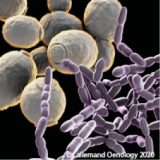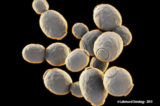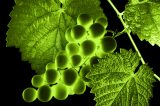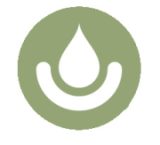
Co-Inoculation
Bacteria Under Investigation
Co-inoculation is the practice of inoculating selected wine bacteria at the beginning of the winemaking process shortly after yeast inoculation, usually 24 to 48 hours after yeast inoculation. This technique is advantageous because not only will it secure the malolactic fermentation (MLF), but also because there are definite advantages that are recognized by winemakers and professionals. For a successful co-inoculation, some parameters are crucial for its success – choosing the right wine yeast, correctly rehydrated, good temperature management and the proper yeast nutrition strategy are keys point to integrate for any fermentations. Well-fed and heathly wine yeast and bacteria leads to complete and regular alcoholic and malolactic fermentations Based on 20 years of experiences, and from the results of many collaborations between Lallemand and research center from France, Spain, Italie, South Africa, Argentina and Germany has shown the benefits of co-inoculation with either Oenococcus oeni or Lactobacillus plantarum UI-Bacteria-1-co-inoculation-South Africa-2018
WINE YEAST PRODUCTION – A DIRECT LINK TO ALCOHOLIC FERMENTATION SUCCESS
UNDER INVESTIGATION NO4
The use of selected wine yeast in dry form dates to the mid-1960’s (Kraus et al, 1983). Gradually, this practice has been one of the most important innovation in winemaking. It allowed winemakers reliability and security during alcoholic fermentation (AF), as well as a tremendous choice of different yeasts, without the concern related to managing a often delicate and difficult spontaneous AF, with all the risk related. Yeast production is a true expertise, one that relies on a strong understanding of yeast metabolism, microbiology and process. The selected wine yeast used by winemakers must be in optimal shape. In order to obtain optimal state, specific feeding regime during its growth and development, tailored to each specific wine yeast, as they are all different, is learned and optimized by true science and years of experience and research. This Under Investigation will showcase how selected wine yeast production is conducted and why it benefits winemakers.Benefit of ADY - ENG

NON-SACCHAROMYCES: BIODIVERSITY UNDER CONTROL
Wine Yeast Under Investigation #3
The initial microbial population present in grape must is very diverse. During the early stages of alcoholic fermentation, Saccharomyces cerevisiae is not the dominant specie and other species (non-Saccharomyces) are present. Non-Saccharomyces yeasts are part of the must microflora and represent an important reservoir of the wine sensory potential. While some are detrimental to sensory quality, others have the potential to add to wine complexity or bring about a real benefit with the right selected Saccharomyces yeast. Three species are presented: Torulaspora delbrueckii, Lachancea thermotolerans and two different strains of Metschnikowia pulcherrima. Read more at the link below: UI Non-Saccharomyces - ENG no 3

